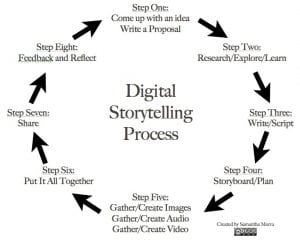Graffiti Walls: Inspiring Creativity and Building Background Knowledge

No matter how young or old, all students love to get out of their seats, talk with their peers, and use colored markers or crayons to create graffiti! Using Graffiti Walls in your classroom is a great way to incorporate movement and conversation while engaging students in learning.
Graffiti Walls are shared writing spaces where students write their comments about specific topics or questions prior to a lesson. They help students activate their prior knowledge and give them a purpose for learning. Moreover, they are much more exciting than the overused K-W-L.
Research tells us that prior knowledge is one of the most important predictors in students’ acquisition of new knowledge. In fact, new knowledge is built on prior knowledge. The more we can help students engage and build prior understanding the more likely students are to learn the material. Prior knowledge also influences reading comprehension; indeed, prior knowledge of subject matter has been found to be more important than overall reading ability on comprehension (Recht & Leslie, 1988). Using Graffiti Walls prior to instruction and using text will help make connections between the known and the unknown and will set our students up for success.
How Do Graffiti Walls Work?
Planning
During the planning phase, teachers need to consider the big ideas and essential questions of the lesson or text they hope students will uncover during the lesson. These will become the basis for knowledge building prior to teaching and the ideas and questions on which we want student to focus as they are “tagging” (drawing, writing) the graffiti walls.
Activating Prior Knowledge
This is where the fun begins. Students, with colored markers or pencils in hand, rotate among the graffiti wall spaces and add their knowledge or questions, doing so in a creative way (i.e.: color, images, slogans, phrases, questions, etc.).
Building Knowledge
After students add to the Graffiti Wall spaces, it is important that there is time for reflection and discussion about the ideas on the spaces. This sharing of ideas and knowledge is how new knowledge about the topic/concept will begin to develop.
Filling the Gaps
Once students have bolstered their background knowledge, students may still have some knowledge gaps to fill. It is here where students will fill those gaps with information provided by the teacher or another source, such through their interaction with text(s) they might read on the topic/concept or information their find through an internet search.
Retagging the Walls
Finally, once students have accumulated new knowledge about a topic/concept, they return to the Graffiti Walls, add what they learned, and share with peers.

What Does it Look Like in the Virtual Classroom?
Due to the pandemic, much of our work with students is occurring full-time or part-time within a virtual environment. That means that we need to figure out how to reimagine all of those engaging and meaningful activities we use in our face-to-face classrooms for our online instruction. Below are several online tools you can use to help replicate the idea of the Graffiti Wall in the virtual world.
Graffiter: This space does not permit collaboration, but does give you an awesome selection of spaces upon which to draw as well as a bunch of fun graffiti artist tools (i.e.: paint, color, etc.).
Miro, Concept Board, ZiteBoard, and AWWBoard are all online whiteboards designed for team collaboration that provides lots of tools and templates for drawing and writing. Users can also upload images and documents.
Common Sense Media Top Interactive Whiteboard Apps provides a list of vetted tools for use in the classroom setting.

References
Recht, D. R., & Leslie, L. (1988). Effect of prior knowledge on good and poor readers’ memory of text. Journal of Educational Psychology, 80(1), 16–20.





